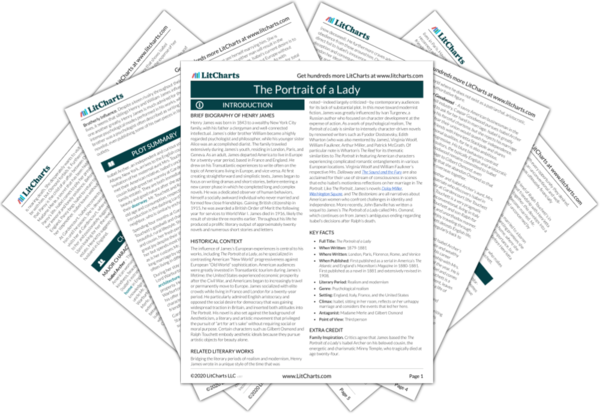Pansy is closer in temperament to the meek Misses Molyneux than the headstrong Isabel and Henrietta. Merle’s suggestion that Pansy might one day have a new mother is weighty for two reasons: firstly, it hints at her own identity as Pansy’s mother, and secondly, it foreshadows the close bond that will grow between Pansy and her future step-mother, Isabel.
